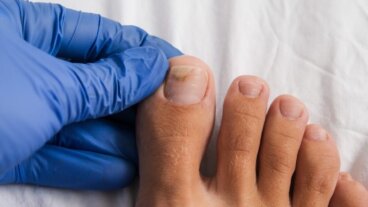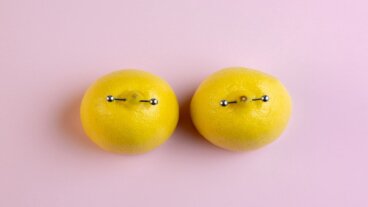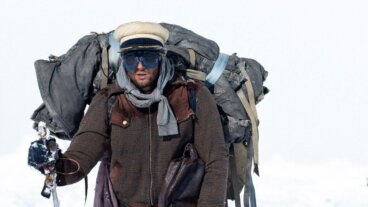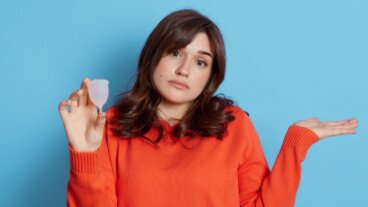Vichy Shower: All About this Hydrotherapeutic Treatment
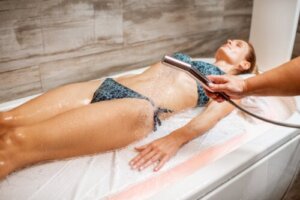

Reviewed and approved by the doctor Leonardo Biolatto
Have you ever heard of a Vichy shower? This treatment of French origin is offered as an alternative hydrotherapy modality. It lasts approximately 45 minutes, during which you receive a pleasant application of 5 simultaneous water channels. At the same time, a specialist massages your entire body in order to reduce contractions and relax the muscles.
As stated in a publication in the North American Journal of Medicine and Science, the use of water in various therapeutic modalities can cause certain effects on different body systems. In this case, it serves as an adjuvant to both mitigate the effects of stress and for circulatory and skin health. Read on!
What is a Vichy shower?
A Vichy shower is a hydrotherapy treatment that, unlike common methods in this category, takes place out of the water. The person lies face down on a waterproof stretcher, with a system of 5 to 7 shower heads installed on a bar.
The chain of jets is located 1 meter (3 feet) above the person. A fine, constant, and abundant quantity of water is applied vertically all over the skin. In itself, it’s a technique of thermal origin, in which water is used at different pressures and temperatures.
In addition, it’s usually combined with other techniques that provide benefits to the skin, muscles, and circulation, such as masks, the use of scrubs, massages, and aromatherapy, among others.
Origin of the Vichy shower
This treatment, increasingly popular in several countries, takes its name from the thermal waters of the city of Vichy, located in central-eastern France. In fact, this place is renowned for its spas and the therapies applied to them.
There are records of treatments in thermal waters combined with massages since the beginning of the 19th century. And although the beginnings of the practice come from Vichy, nowadays they’re a very popular option in spas all over Europe.
The mineral richness of its waters is so well known that Vichy tablets (commonly known as pastilles) have been produced since 1825. It was an invention of the doctor Joseph d’Arcet to transfer its benefits to the digestive system.
Vichy shower: applications and variants
As the Vichy shower differs from traditional hydrotherapy in that it doesn’t immerse the whole body, it can be combined with other techniques. Many specialists choose to integrate the relaxing effects of water with massages, masks, and scrubs.
The type of treatment depends on what each person is looking for, as well as the therapist’s recommendations. Some of the most common are the following:
- Clay masks. A natural exfoliant that helps regenerate and cleanse the skin.
- Algotherapy. During some Vichy showers, the body is covered with seaweed, such as fucus or laminaria, in order to take advantage of its moisturizing and nourishing properties.
- Natural exfoliants. Other alternatives applied to nourish the dermis are coconut or strained pineapple scrubs.
- Mud wraps. This favors the cleansing effect on the skin and muscle relaxation.
- Aromatherapy. During the reception of the numerous water jets, it’s common to create an ambiance of aromatherapy. Essential and other aromatic oils are used for this purpose.
Benefits of the treatment
The water pressure, massages, and scrubs combined in a 45-minute session have some excellent benefits. The most sought-after in these therapies is usually muscle relaxation and stress treatment. However, it also has circulatory and skin effects.
Mineral-medicinal waters
Mineral-medicinal waters provide different benefits depending on their chemical composition. There are numerous types of water, from chlorinated, to carbonated and bicarbonated.
According to a study by the University of La Rioja, sulfurized waters improve respiratory frequency and intensity, while creating an antacid action in the digestive system.
Water temperature
Beyond the health benefits that thermal waters can offer, Vichy shower treatments have benefits in other aspects too. In this sense, temperatures are taken into account.
- The shower that oscillates between 30 and 35 degrees (86 to 95 F) is considered to be cold. With this one, we seek the effect of toning and revitalizing.
- On the other hand, to relax the nervous system, a shower of 35 to 38 degrees (95 to 100 F) is used, as this is considered hot.
It isn’t always possible to apply these therapies in their region of origin. Therefore, the technique has been transferred and specialized in numerous establishments around the world.
Circulation
Contact with hot and cold water promotes circulation and lowers blood pressure. The mixed technique of cryotherapy and thermotherapy offered by the Vichy shower produces a relaxing effect throughout the body.
Lymphatic drainage
The method of removing accumulated liquids and waste is sought with different types of massages. During the Vichy shower, movements that promote optimal functioning of the lymphatic system are applied. Its advocates even claim that it also benefits the immune system.
Relaxation and stress relief
The massages, the temperature of the water and the mixed techniques applied contribute to muscle relaxation, one of the main objectives of the treatment. It’s also recommended to relieve stress and contractures.
Exfoliation
This integral therapy also exfoliates the skin through specialized techniques; from the application of natural oils to mud wraps. During the process of massaging and showering, it works to remove impurities from the skin’s surface.
Hydration
Another of the main benefits of this treatment is the hydration of the skin. This is explained in its ability to increase blood flow. For this reason, many people seek sessions during the winter, when the dermis dries out.
The Vichy shower is an ideal treatment to relax
Whether in localized thermal waters or in specialized salons, this treatment is an integral instance of relaxation, cleansing, and exfoliation of the skin. It isn’t necessary to have a specific discomfort to go there.
It’s highly recommended after a stressful day, as it favors the improvement of different physiological aspects; from circulation and contractions, to skin impurities and general stress.
All cited sources were thoroughly reviewed by our team to ensure their quality, reliability, currency, and validity. The bibliography of this article was considered reliable and of academic or scientific accuracy.
- An Introduction to the lymphatic system and the use of hydrotherapy in Management of Lymphoedema by Professor Peter Mortimer. (2023, 22 febrero). Aquatic Therapy Association of Chartered Physiotherapists. https://atacp.csp.org.uk/news/2023-02-22-introduction-lymphatic-system-use-hydrotherapy-management-lymphoedema-professor
- Equipo docente ISED Salud y Bienestar. (2018). Tipos de aguas mineromedicinales. ISED, Instituto Superior de Estudios. Consultado el 3 de mayo de 2023. https://www.ised.es/articulo/salud-y-bienestar/tipos-de-aguas-mineromedicinales/
- Mooventhan, A., & Nivethitha, L. (2014). Scientific evidence-based effects of hydrotherapy on various systems of the body. North American journal of medical sciences, 6(5), 199–209. https://www.ncbi.nlm.nih.gov/pmc/articles/PMC4049052/
-
Nagaich U. (2016). Hydrotherapy: Tool for preventing illness. Journal of advanced pharmaceutical technology & research, 7(3), 69. https://www.ncbi.nlm.nih.gov/pmc/articles/PMC4932807/
- On the Mode of Action and the Therapeutical Applications of the Vichy Waters. (1851). The British and foreign medico-chirurgical review, 7(14), 415–419. Consultado el 3 de mayo de 2023. https://www.ncbi.nlm.nih.gov/pmc/articles/PMC5183412/
- Pereira, L. (2018). Seaweeds as Source of Bioactive Substances and Skin Care Therapy—Cosmeceuticals, Algotheraphy, and Thalassotherapy. Cosmetics, 5(4), 68. https://www.mdpi.com/2079-9284/5/4/68
-
Petrofsky, J., Gunda, S., Raju, C., Bains, G. S., Bogseth, M. C., Focil, N., Sirichotiratana, M., Hashemi, V., Vallabhaneni, P., Kim, Y., Madani, P., Coords, H., McClurg, M., & Lohman, E. (2010). Impact of hydrotherapy on skin blood flow: How much is due to moisture and how much is due to heat?. Physiotherapy theory and practice, 26(2), 107–112. https://pubmed.ncbi.nlm.nih.gov/20067360/
- Valenti, D. M., Silva, J., Teodoro, W. R., Velosa, A. P., & Mello, S. B. (2012). Effect of topical clay application on the synthesis of collagen in skin: an experimental study. Clinical and experimental dermatology, 37(2), 164–168. https://pubmed.ncbi.nlm.nih.gov/22340693/
- Vichy (pastillas). (2022). Wikipedia, la enciclopedia libre. https://es.wikipedia.org/wiki/Vichy_(pastillas)
- Vilades Juan, E. (2021). Aguas minero-medicinales en La Rioja: composición, propiedades e historia de su uso en balnearios [Tesis doctoral]. Facultad de Ciencia y Tecnología. Universidad de La Rioja. Consultado el 3 de mayo de 2023. https://dialnet.unirioja.es/servlet/tesis?codigo=303083
This text is provided for informational purposes only and does not replace consultation with a professional. If in doubt, consult your specialist.

